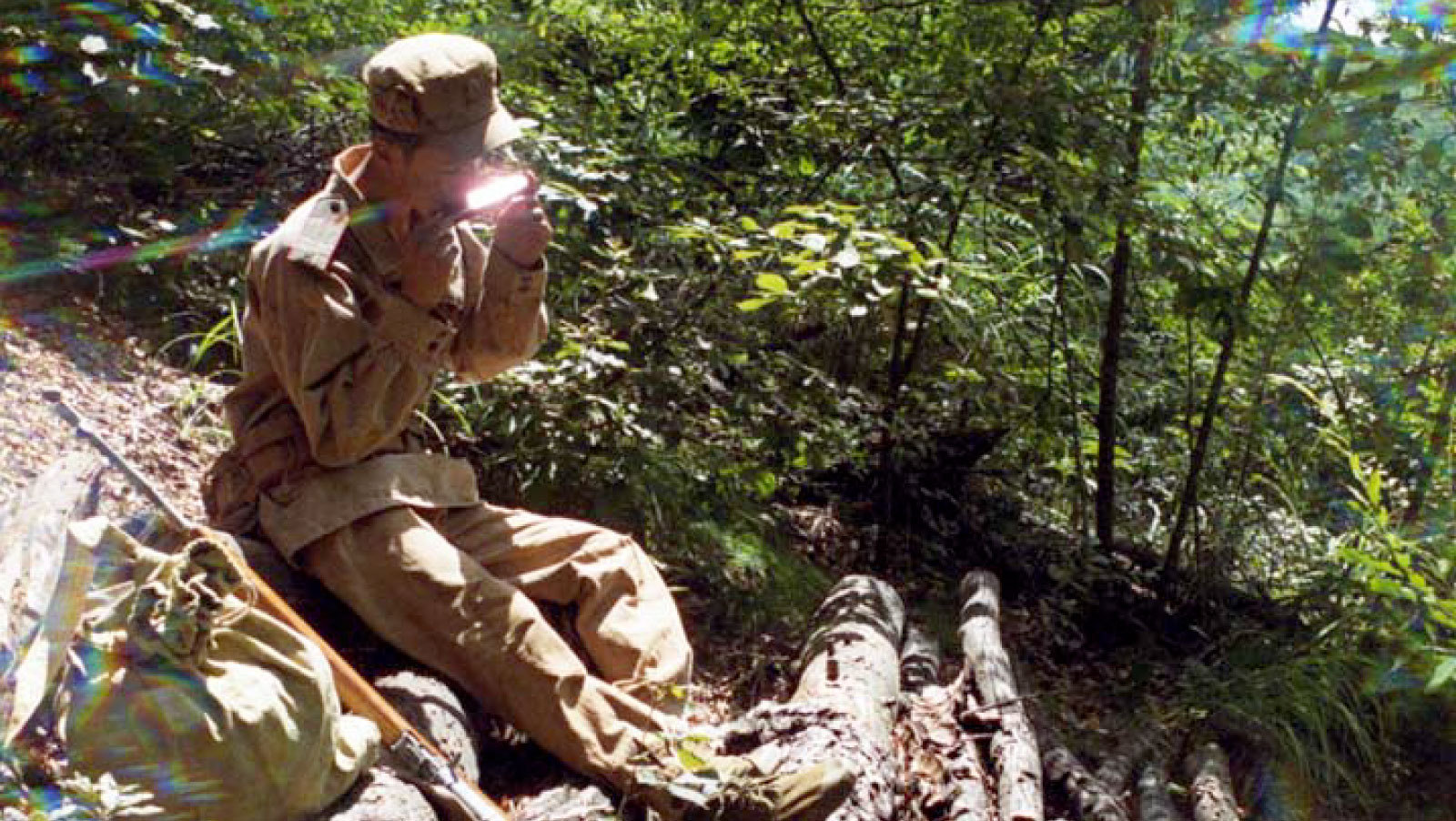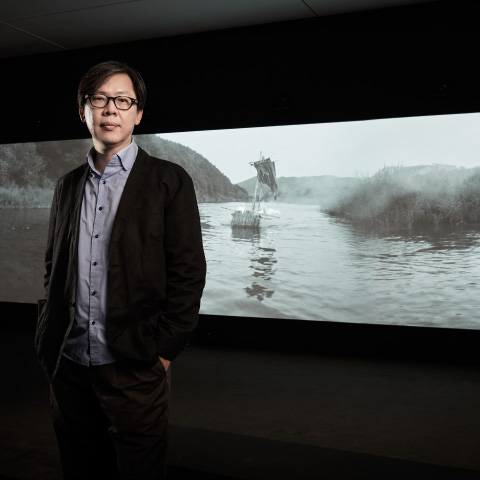
Child Soldier
- Child Soldier, 2017Courtesy of the artist
This installation consists of nine digital photographs in light boxes, and a video which shows still images of the photographs with sound. A boy man walks through a forest while sometimes stopping at a water place, playing guitar or his harmonica, or lining up leaves on the ground. The facts that he is bleeding, wearing a uniform, and carrying arms and ammunition hint at the work's military theme, and from radio transmissions, parts that the boy reads from a textbook, and popular songs at the end, one can guess that it deals with issues related to North Korea.
Having created several works themed around the history of North and South Koreas in the past, here the artist focuses on how the media coverage of each nation form the respective people's ideas and opinions about each other. At the same time, the work touches upon the global problem of child soldiers, revolving around the notion that these soldiers - carrying guns to kill people - are in fact boys that still retain their childish innocence. It was inspired by stories about North Korean child soldiers that the artist's mother has witnessed first-hand. "Quite unlike the things the government and the news were telling us about brave and frightening soldiers, they were just boys with guns that played around in the mountains."
PARK Chan-kyong
- Born 1965 in Seoul, South Korea
- Based in Seoul, South Korea

Photo: Keith Park
Park Chan-kyong produces works containing philosophical readings of the issues faced by North and South Korea; the history of Asia's art as well as its wars; and of the continent's shared religious legacy. Since the first inter-Korea summit, held in 2000 following the ceasefire of the Korean War, he has additionally created many works and written many inquiries concerning the past and future of North and South Korea. In 2014, he acted as the artistic director of the SeMa Biennale, receiving high praise for his keen depiction of contemporary Asia with his use of metaphors involving ghosts, spies, and grandmothers. Foregrounding for contemplation the negative legacy of the Cold War era and of America's relationship to all of East Asia (including the Korean peninsula and Japan,) he attempts, through both critical and poetic expressive means, to question the set of values in which the two Koreas and neighboring countries have been geopolitically entrenched by the 20th century's various obsessions.
Selected Works & Awards
| 2017 | 안녕 安寧 Farewell (solo), Kukje Gallery, Seoul, South Korea |
| 2017 | 2 or 3 Tigers, Haus der Kulturen der Welt [HKW], Berlin, Germany |
| 2015 | Pa-gyong: Last Sutra Recitation (solo), Institute of International Visual Arts [Iniva], London, UK |
| 2013 | Homeworks 6, Artheum, Beirut, Lebanon |
| 2011 | 61st Berlin International Film Festival, Berlin, Germany, Golden Bear for the Best Short Film |
Map
Aichi Prefectural Museum of Art Gallery (8F)
Address
1-13-2 Higashisakura,Higashi-ku, Nagoya
461-8525 JAPAN
Open
(Fri -20:00)
Admission until
30 minutes
before closing
Closed
Barrier free
Access
・5 minutes on foot from Sakae-Machi Station on the Meitetsu Seto Line.